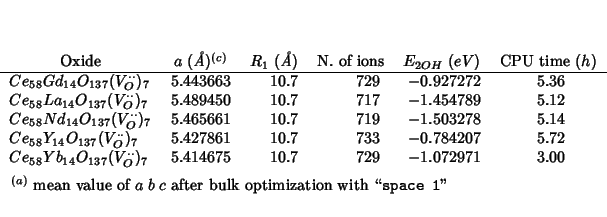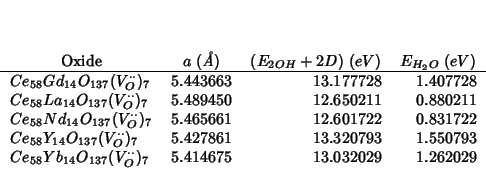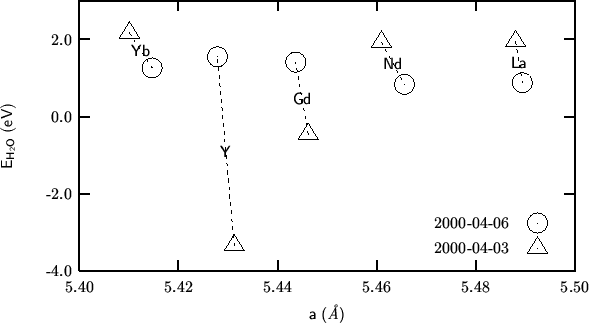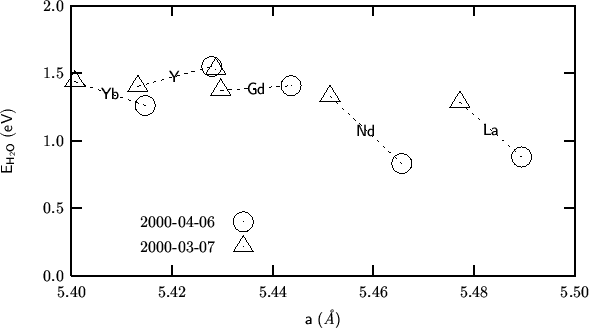2000-04-06:


The following compares current results with 2000-04-03 (smaller supercell):

Looks better than 2000-04-03, but still the wrong trend!
The following compares current results with 2000-03-07: supercell vs mean field.

Points referring to the same oxide are connected by the dashed line (the 2000-03-07 data set contains also a point for pure ceria, which is not present in 2000-04-06): looks like using the supercell method gives a lattice parameter sistematically longer than the mean field approach. Apart from this, it seems that a moderately good accord is found between the two different approaches.
The starting ![]() orientation was along the [111] crystallographic
direction. This orientation did not change after relaxation in all cases.
orientation was along the [111] crystallographic
direction. This orientation did not change after relaxation in all cases.